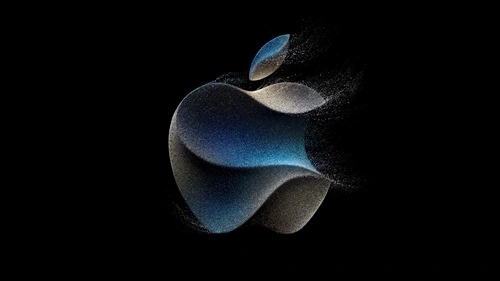Apple Inc. is a leading global technology company known for its innovation, premium products, and strong brand loyalty. With a market capitalization of around $3 trillion, Apple has positioned itself as a powerhouse in the tech industry. This article presents a comprehensive SWOT analysis of Apple in 2024, examining its strengths, weaknesses, opportunities, and threats, to understand its current market position and future prospects.

Current Overview of Apple
As of 2024, Apple continues to dominate the global technology market, offering a diverse range of products, including iPhones, iPads, MacBooks, Apple Watches, and services such as Apple Music, Apple TV+, and iCloud. Under the leadership of CEO Tim Cook, Apple has seen significant growth, particularly in its services sector, which now contributes a substantial share to its annual revenue. Despite facing stiff competition and global economic challenges, Apple remains at the forefront of technological innovation and customer satisfaction.
Strengths
1. Strong Brand Loyalty
Apple’s brand is synonymous with quality, innovation, and status. The company’s ability to retain customers is unparalleled, with many consumers unwilling to switch to other brands once they become Apple users. This loyalty is driven by Apple’s consistent delivery of high-quality products, user-friendly interfaces, and strong privacy features.
2. Diverse Product Portfolio
Apple offers a wide range of products and services, from hardware like iPhones, MacBooks, and Apple Watches to software and services like iOS, macOS, and Apple Pay. This diversity not only generates multiple revenue streams but also helps the company mitigate risks associated with market fluctuations in any single product category.
3. Innovative Technology
Apple is renowned for its technological innovation. The company has consistently introduced groundbreaking products and features, such as the iPhone, Face ID, and M1 chips. Its focus on R&D ensures that Apple stays ahead of competitors in terms of product quality and technological advancements.
4. Financial Strength
With a strong balance sheet, Apple has substantial cash reserves, allowing it to invest in new technologies, acquisitions, and market expansions. This financial stability also provides a buffer against economic downturns and competitive pressures.
Weaknesses
1. High Product Prices
Apple’s premium pricing strategy limits its market to higher-income consumers, excluding a significant portion of potential customers. While this approach maintains the brand’s luxury status, it also restricts market share growth, especially in price-sensitive regions.
2. Dependence on the iPhone
Despite its diverse product range, Apple still relies heavily on the iPhone for a significant portion of its revenue. Any decline in iPhone sales, whether due to market saturation or increased competition, could have a considerable impact on the company’s overall financial performance.
3. Limited Success in Non-Core Areas
While Apple excels in hardware, its forays into services like Apple TV+ and Apple Music have not achieved the same level of success. For instance, Apple TV+ holds only a small share of the streaming market, far behind competitors like Netflix and Disney+.
4. Ethical and Legal Challenges
Apple has faced various ethical and legal challenges, including accusations of anti-competitive practices and user privacy violations. These issues can damage the company’s reputation and result in costly legal battles.
Opportunities
1. Expansion in Artificial Intelligence (AI)
The rapid development of AI presents significant opportunities for Apple. By integrating AI more deeply into its products, such as through enhanced Siri capabilities or AI-driven health features in Apple Watch, Apple can offer even more personalized and innovative user experiences.
2. Growth in Emerging Markets
As smartphone penetration increases in emerging markets like India and Africa, Apple has the opportunity to expand its customer base. Introducing more affordable devices, like the iPhone SE, could help Apple capture a larger market share in these regions.
3. Eco-Friendly Product Development
With growing global awareness of environmental issues, Apple can capitalize on its commitment to sustainability by developing more eco-friendly products. This not only enhances the company’s image but also meets the increasing consumer demand for green products.
4. Expansion of Service Offerings
Apple’s services sector, including Apple Music, Apple TV+, and iCloud, continues to grow. By expanding these offerings, possibly through strategic partnerships or new service introductions, Apple can increase its recurring revenue and reduce its reliance on hardware sales.
Threats
1. Intense Competition
Apple faces fierce competition from other tech giants like Samsung, Google, and emerging brands like Xiaomi and OnePlus. These competitors offer similar features at lower prices, challenging Apple’s market share, especially in the smartphone segment.
2. Economic Uncertainty
Global economic conditions, including inflation, supply chain disruptions, and geopolitical tensions, pose significant risks to Apple’s operations. The ongoing semiconductor chip shortage, for instance, could hinder production and affect product availability.
3. Counterfeit Products
The proliferation of counterfeit Apple products, particularly in markets like China, poses a threat to Apple’s brand reputation and revenue. These fake products are often of inferior quality, leading to potential safety hazards and customer dissatisfaction.
4. Regulatory Challenges
Increasing scrutiny from regulators worldwide, particularly in terms of antitrust laws and data privacy regulations, could lead to stricter controls and hefty fines for Apple. The company must navigate these challenges carefully to avoid legal and financial repercussions.
Conclusion
Apple Inc. remains a dominant force in the global tech industry, thanks to its strong brand, innovative products, and loyal customer base. However, the company must address its weaknesses, such as high pricing and over-reliance on the iPhone, while seizing opportunities in AI, emerging markets, and eco-friendly innovations. By effectively managing these aspects and mitigating potential threats, Apple can continue to thrive in an increasingly competitive and volatile market.